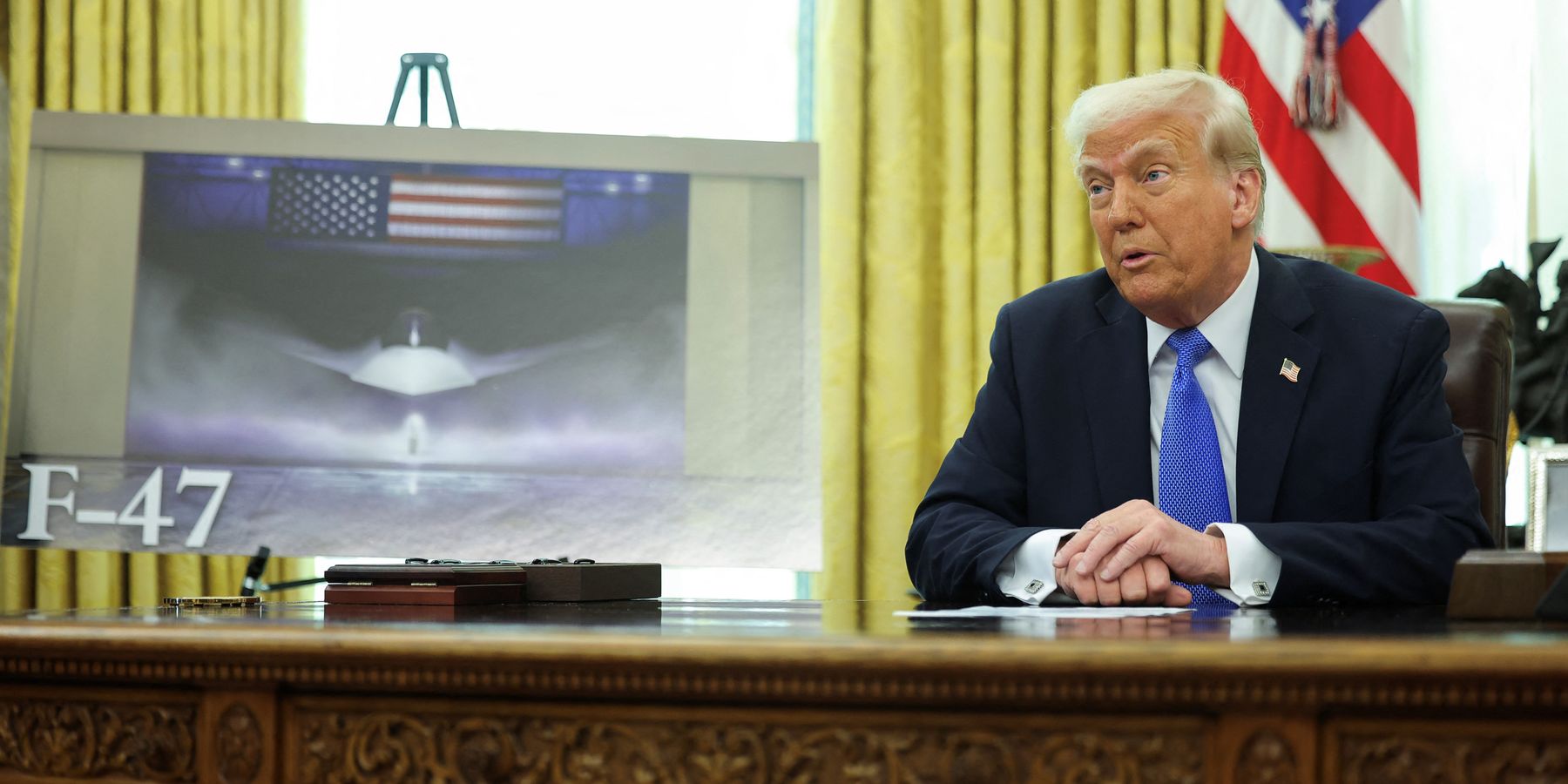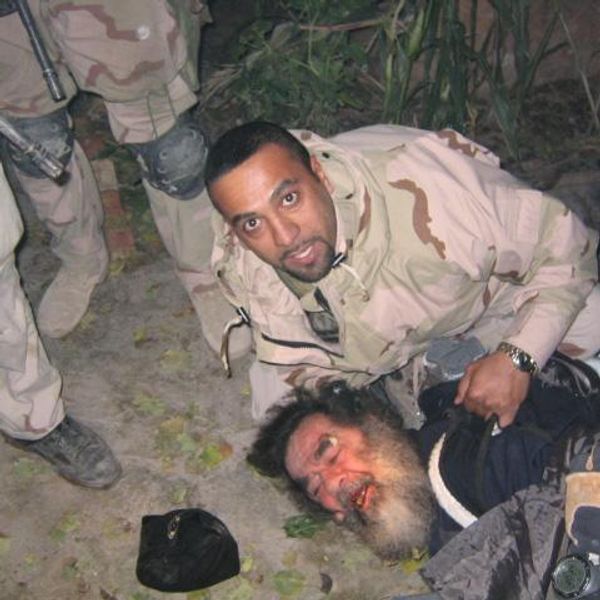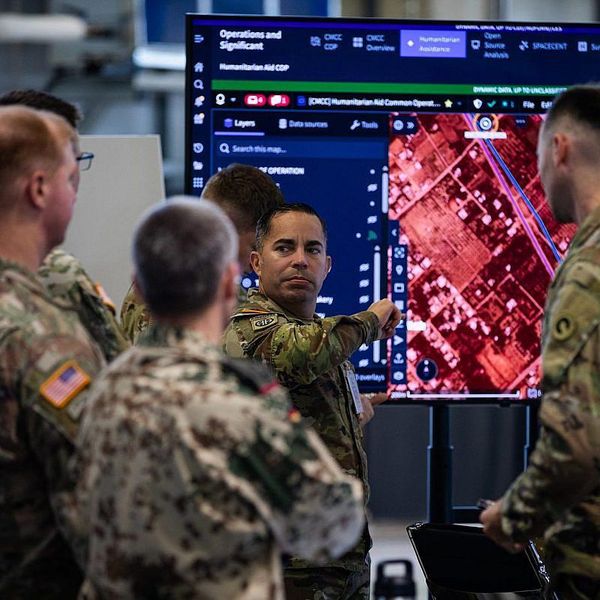If and when it finally comes to be written decades from now, an honest history of the F-47 “fighter” recently unveiled by President Trump will doubtless have much to say about the heroic lobbying campaign that garnered the $20 billion development contract for Boeing, the corporation that has become a byword for program disasters (see the KC-46 tanker, the Starliner spacecraft, the 737 MAX airliner, not to mention the T-7 trainer.)
Boeing, which is due to face trial in June on well-merited federal charges of criminal fraud, was clearly in line for a bailout. But such succor was by no means inevitable given recent doubts from Air Force officials about proceeding with another manned fighter program at all.
“You’ve never seen anything like this,” said Trump in the March Oval Office ceremony announcing the contract award.
Well, of course we have, most obviously in recent times with the ill-starred F-35. Recall that in 2001 the Pentagon announced that the F-35 program would cost $200 billion and would enter service in 2008. Almost a quarter century later, acquisition costs have doubled, the total program price is nudging $2 trillion, and engineers are still struggling to make the thing work properly.
Thus, succeeding chapters of the F-47’s history will likely have to cover the galloping cost overruns, unfulfilled technological promises, ever-lengthening schedule shortfalls, and ultimate production cancellation when only a portion of the force had been built.
There seems little risk in predicting the F-47 — “a beautiful number," said the 47th president — will follow the same dollar-strewn path. As Trump truthfully remarked, “we can’t tell you the price.” And don’t imagine that, if the development phase reveals that the program can’t fulfill any or most of its projected requirements, the Air Force will call it a day and kill the program. The official Air Force press release accompanying the announcement states: “This phase will produce a small number of test aircraft for evaluation. The contract also includes competitively priced options for low-rate initial production.”
In other words, the fix is in. “Low rate initial production” means that subcontracts will be spread across the political landscape, ensuring the creation of an unstoppable lobby preventing any future effort to strangle this boondoggle in its cradle.
For confirmation, look only at the F-35, 1,000 or so copies of which were cranked out before Lockheed got the go-ahead for full-scale production. In confident anticipation that nothing will interrupt the production cycle, Boeing has invested a reported $2 billion in expanding production facilities at its St. Louis, Missouri, plant, where production of the F-15EX (a costly version of the venerable F-15, originally gold-plated to sell to the Qataris) is due to end this year.
Extolling the plane’s advertised virtues, Trump singled out its presumed invisibility to radar. “America’s enemies will never see it coming,” he said.
Stealth has indeed been the holy grail of aerospace development ever since the days when Jimmy Carter sought to kill the B-1 bomber program in favor of the F-117 stealth bomber. (We did of course end up buying both.) Claims for this technology appeared to be justified when Lockheed's F-117 diminutive bomber was advertised as having effortlessly penetrated Iraqi air defenses undetected on the first night of the 1991 Gulf War.
Only later did a GAO report reveal that in fact the planes had required the protection of a fleet of electronic warfare planes, and they missed most of their assigned targets, and furthermore failed to destroy Saddam’s air-defense network as claimed.
In the 1999 Kosovo war, the Serbs managed to knock down one F-117 and severely damage another using clever tactics and a modified ancient Soviet SAM missile system. Nowadays both the Chinese and Russians claim to have developed technologies to detect stealth intruders — there are even claims that the Chinese system could passively employ signals from Elon Musk’s SpaceX Starlink satellite array!
Nevertheless, the F-47 designers have clearly prioritized stealth, despite the fact that obligatory features, such as carrying all bombs and missiles internally, enlarge the fuselage. Hence the large nose-on profile, apparent even in the uninformative images so far released. This militates against aerodynamic performance and maneuverability, unfortunate deficiencies for a fighter.
Such carping aside, the most notable feature of the F-47 program is that it will purportedly not fly alone, but be accompanied by unmanned Collaborative Combat Aircraft, or drones, “as many as you want,” according to Trump. The Air Force plans to buy 1,000 of them, at around $30 million a pop.
Under the overall direction of the F-47 pilot, they will in theory at least be able to engage enemy planes, attack targets on the ground, or perform reconnaissance. Two contractors, General Atomics and Anduril, are already competing for the initial CCA contract and have been displaying mockups of their candidates at trade shows since last year while hurling insults at each other via social media and the trade press.
“Anduril is the Theranos of defense,” jibed General Atomics spokesman Mark Brinkley during the Air Force Association jamboree in Washington D.C. last September, referencing the infamous Palo Alto startup that fraudulently claimed to perform comprehensive medical diagnostics from a single drop of blood. Both contestants are supposed to put prototypes in the air this summer.
Pentagon insiders are not impressed either with the concept or at least progress to date. One veteran observer of technologically ambitious programs suggested to me that the Air Force staff officers supervising the CCA program may be easy prey for the contractors.
“They’re not nearly skeptical enough about General Atomics or Anduril. I don’t see any of the skepticism they should be exhibiting for pouring out this kind of money,” the observer said.
Hopefully, these glib enthusiasts will be mulling the problems associated with the software required to enable an F-47 “quarterback” pilot to oversee the operations of the wingmen drones. After all, their peers in the F-35 program are still struggling with “Technology Refresh-3,” the latest (failing) effort to make the plane’s software work adequately. Mulling other inevitable problems facing an F-47 in combat, such as surviving enemy efforts “to find you, track you, and kill you” before getting into position to deploy the unmanned aircraft with their missile loads
“I don’t know why we’re doing it, I don’t get it,” the observer concluded.
Last December, then-Air Force Secretary Frank Kendall suggested that the Air Force might not be able to afford a next-generation fighter as well as the collaborative drone, in addition to a next-generation refueling tanker, and that “we have to get somewhat creative…to meet the threat.” As it turned out, no creativity at all was required, as the history books will most assuredly record.















